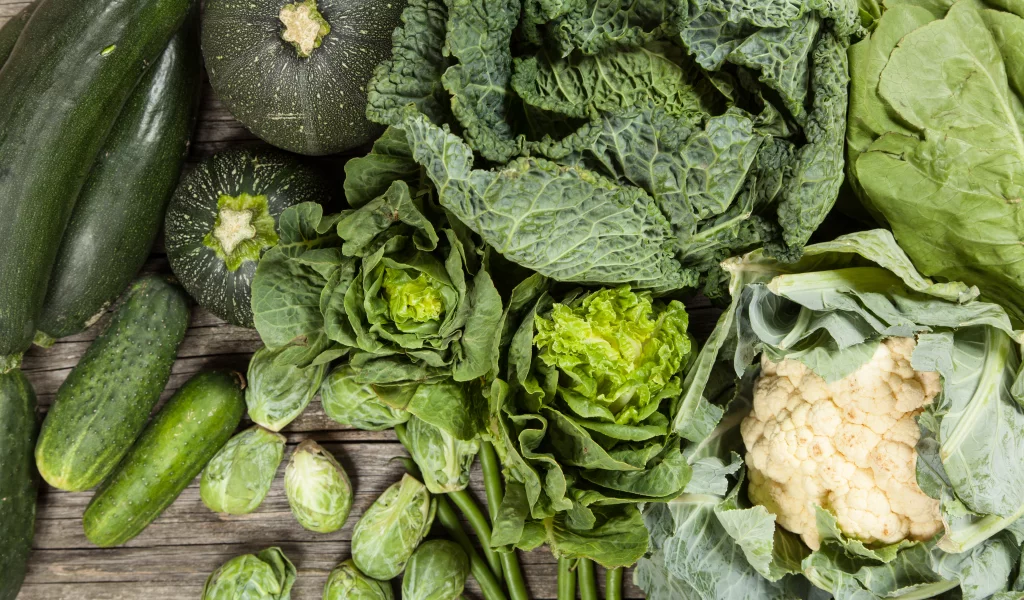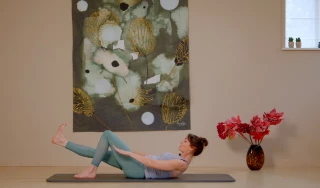
50 SHADES OF GREEN
It’s important to eat all the colours (e.g. eat the rainbow colours for vitality and immunity) but green vegetables hold a special place in the vegetable hall of fame. Why is it important to eat greens? How can we increase greens intake? Read all about it.
Your mother was right; you should ‘eat your greens’. Here’s an interesting fact: the human eye can distinguish more shades of green than any other colour. The cones(*) in the human eye are more sensitive to the frequency of the green range and that allows us to differentiate almost endless number of shades of green. Perhaps the explanation for this is evolutionary. Different species evolve according to the environment and conditions they evolved in. And just like certain insects can detect colours in the infrared and ultraviolet ranges to spot their food, our eyes are designed to spot ours. This is to indicate that green food and us go hand in hand; a perfect match!
If there’s one thing that all dietary systems agree upon is that green leafy vegetables are essential and important to our nutrition. Chlorophyll is a phytochemical that makes green leaves green. Photosynthesis (**), the magical creation of the very essence of life on our planet, takes place in chlorophyll containing protein cells.
Chlorophyll is chemically similar to haemoglobin (***), the protein that carries oxygen in the blood. Eating plenty of chlorophyll rich food may strengthen oxygen conductivity, improving vitality and energy level. Chlorophyll is also a strong antioxidant that supports detoxification.
So now that we have scientific proof to what our mothers said is true; how can we increase our green leafy vegetables intake? Here are some practical ideas:
JUICES
Since there is a limit to how much salad we can chew a day, juicing leafy greens is an amazing supplement to our diet. Use apple, celery or cucumber as a base and add any green leaves you have; spinach, kale, collard greens, romaine lettuce, purslane, parsley, Swiss chard etc. it’s always nice to add a slice of fresh ginger and some lemon to it. Juicing extracts the nutrients in the leaves, leaving behind the fibre so you are getting a concentrate of minerals, vitamins, phytochemicals, enzymes and (healthy) sugars, all very easy to digest and absorb.
SMOOTHIES
Unlike juices, in smoothies you keep the whole fruit and leaves including the fibre. Use all the leaves mentioned above with a portion of a fruit and your liquid of choice. It’s a good opportunity to add more green power- spirulina, chllorella, wheatgrass powder.
SALADS
A (green) salad a day will keep the doctor away. Make sure to indulge at least once a day with a green salad as a base for a meal salad or as a side dish. Make sure to add as many greens as you can to any sandwich or wrap. Make sure to mix and rotate; lam lettuce, arugula, micro greens and all the salad leaves.
STEWS
Cooked greens are also extremely nourishing. Cooking the vegetables makes some of the nutrients more easy to digest. Stir-frys, curries, soups, pasta sauces and stews are another great addition to your daily greens intake. Cooking variety- cabbage, Chinese cabbage, bok choy, kale, spinach, collard greens, Swiss chard, broccoli asparagus, courgette and more. Fresh herbs will upgrade every dish in flavour as well as nutritional value; parsley, coriander, dill, basil, thyme, mint, sage, rosemary, chives.
To summarise, in order to really go green you need to combine all the different options, of course not all of them in one day but few during the week. The key is to rotate and try as many different kinds.
* photo-receptor nerve cells in the retina that receive the light and colours, ** The process used by plants to convert light energy in to chemical energy (stored in carbohydrates) synthesised from carbon dioxide and water, *** haemoglobin is built around iron while the chlorophyl around magnesium


